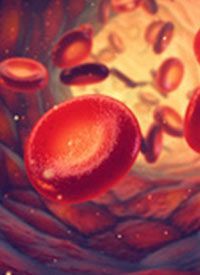Article
Biallelic Deletion of TNFRSF17 Associated With Resistance to BCMA-Targeting Therapies In Myeloma
Author(s):
Identifying BCMA expression, copy number variation, and point mutations can have important therapeutic implications for patients receiving BCMA-targeting CAR T-cell therapy or T-cell engagers for multiple myeloma.
Multiple Myeloma

Identifying BCMA expression, copy number variation (CNV), and point mutations can have important therapeutic implications for patients receiving BCMA-targeting CAR T-cell therapy or T-cell engagers (TCEs) for multiple myeloma, according to findings presented at the 19th International Myeloma Society Annual Meeting.1
“Acquired or selection of preexisting clones with biallelic deletion of TNFSF17 is an important and relatively rare mechanism of antigen escape and resistance to BCMA-targeted therapy,” said lead author Holly Lee, MD, a master’s degree candidate at the University of Calgary. “BCMA extracellular domain nontruncating missense mutations such as R27P also mediate resistance to T-cell engagers. Our findings highlight the clinical relevance of monitoring TNFSF17 structural endpoint mutations, and the need for the ongoing development of novel and multiengine epitope targeted immunotherapeutic approaches.”
Lee and colleagues performed whole-genome sequencing (WGS) with 100x coverage on paired normal and tumor CD138-positive cells on 19 patients prior to treatment with BCMA-targeting TCE or CAR T-cell therapy and again at relapse. Investigators also conduced single-cell mRNA and CNV analyses on cells from these patients. Lee said they hoped to identify the degree to which BCMA antigenic loss contributed to BCMA-targeting immunotherapeutic resistance.
WGS identified subclonal TNFRSF17 deletion in 5% of patients prior to CAR T-cell therapy. “A subclonal deletion with a variant allelic fraction of 3.5% encompassing the TNFRSF17 gene locus on chromosome 16 of about 0.8 Mb pairs was identified in 1 out of 19 patients,” Lee said. “This patient achieved [very good partial response] to [idecabtagene vicleucel (Abecma)], with a duration of response of about 8 months and acquired bialletic TNFRSF17 loss at progressive disease.”
In 1 patient, single-cell (sc) CNV identified monoallelic loss of TNFRSF17 in 8% of cancer cells prior to CAR T-cell therapy. After therapy, 98% of tumor cells displayed biallelic loss of TNFRSF17 and copy number gains at the MYC locus.
Investigators then performed scCNV analysis on CD138-positive cells collected pre- and post-therapy from bone marrow aspirates of 30 patients with relapsed multiple myeloma. Sixteen patients previously received targeted therapies, 7 received BCMA-targeting CAR T-cell therapies, and 7 received BMCA-targeting TCEs.
Prior to anti-BCMA therapy, investigators detected subclonal monoallelic copy number losses of TNFRSF17 in 14% of tumor cells. Deletions ranged from 200 kb to 2.3 Mb pairs. “Deletions to 5 prime and 3 prime to the TNFRSF17 locus were also noted in 28% of the myeloma cells, denoting locus genomic instability.” Lee said.
In a patient who progressed from a durable complete remission on BCMA TCEs, investigators observed an acquired monoallelic loss of BCMA coupled with de novo nontruncating missense mutation in the TNFRSF17 extracellular domain at position 80, converting an arginine to a proline at position 27. Lee said this resulted in decreased measurable surface of BCMA expression.
“The R27 residue within the extracellular domain of BCMA is known to be involved in hydrogen bonding interactions with several residues within the heavy chain of teclistamab [Tecvayli],” Lee said. She added that R27P disrupts stable binding of teclistamab and elranatamab to BCMA.
Teclistamab is a bispecific IgG4 antibody that binds BCMA and CD3 to redirect T cells to multiple myeloma cells. Findings presented at the 2022 ASCO Annual Meeting showed that the agent induced an objective response rate (ORR) of 52.5% (95% CI, 36.1%–68.5%) for patients with relapsed/refractory multiple myeloma who received a median of 6 prior lines of therapy, including BCMA-directed therapy.2
Elranatamab (PF-06863135) is an investigational BCMA/CD3-targeted bispecific antibody in development for the treatment of multiple myeloma. In initial efficacy results presented at the 2022 ASCO Annual Meeting, elranatamab induced an ORR of 60.6% (95% CI, 50.0%-70.6%) in patients with relapsed/refractory multiple myeloma.3
Noopur S. Raje, MD, a professor of medicine at Harvard Medical School, and the Rita Kelley Chair in Oncology and director of the Center for Multiple Myeloma at Massachusetts General Hospital, offered perspective on the presentation. Not all mutations are created equal, she said, which raises important biologic questions.
“Is it important to identify these mutations when thinking about a BCMA strategy, especially if you're thinking about sequencing some of these strategies?” Raje said. “Should we be routinely doing mutational profiling of the CARs and TCEs as these are not routinely picked up by immunohistochemistry or even by flow cytometry? And is it important to understand epitopes specificity of the drug product? And this will then allow us to decide which drug product you can sequence later on.”
References
- Lee H, Maity R, Ahn S, et al. Point mutations in BCMA extracellular domain mediate resistance to BCMA targeting immune therapies. Presented at: 2022 International Myeloma Society Annual Meeting and Exposition; August 25-27, 2022; Los Angeles, CA. Abstract OAB-005.
- Touzeau C, Krishnan AY, Moreau P, et al. Efficacy and safety of teclistamab (tec), a B-cell maturation antigen (BCMA) x CD3 bispecific antibody, in patients (pts) with relapsed/refractory multiple myeloma (RRMM) after exposure to other BCMA-targeted agents. J Clin Oncol. 2022;40(suppl 16; abstr 8013). doi: 10.1200/JCO.2022.40.16_suppl.8013
- Lesokhin AM, Arnulf B, Niesvizky R, et al. Initial safety results for MagnetisMM-3: A phase 2 trial of elranatamab, a B-cell maturation antigen (BCMA)-CD3 bispecific antibody, in patients (pts) with relapsed/refractory (R/R) multiple myeloma (MM). J Clin Oncol. 2022;40(suppl 16; abstr 8006). doi: 10.1200/JCO.2022.40.16_suppl.8006








